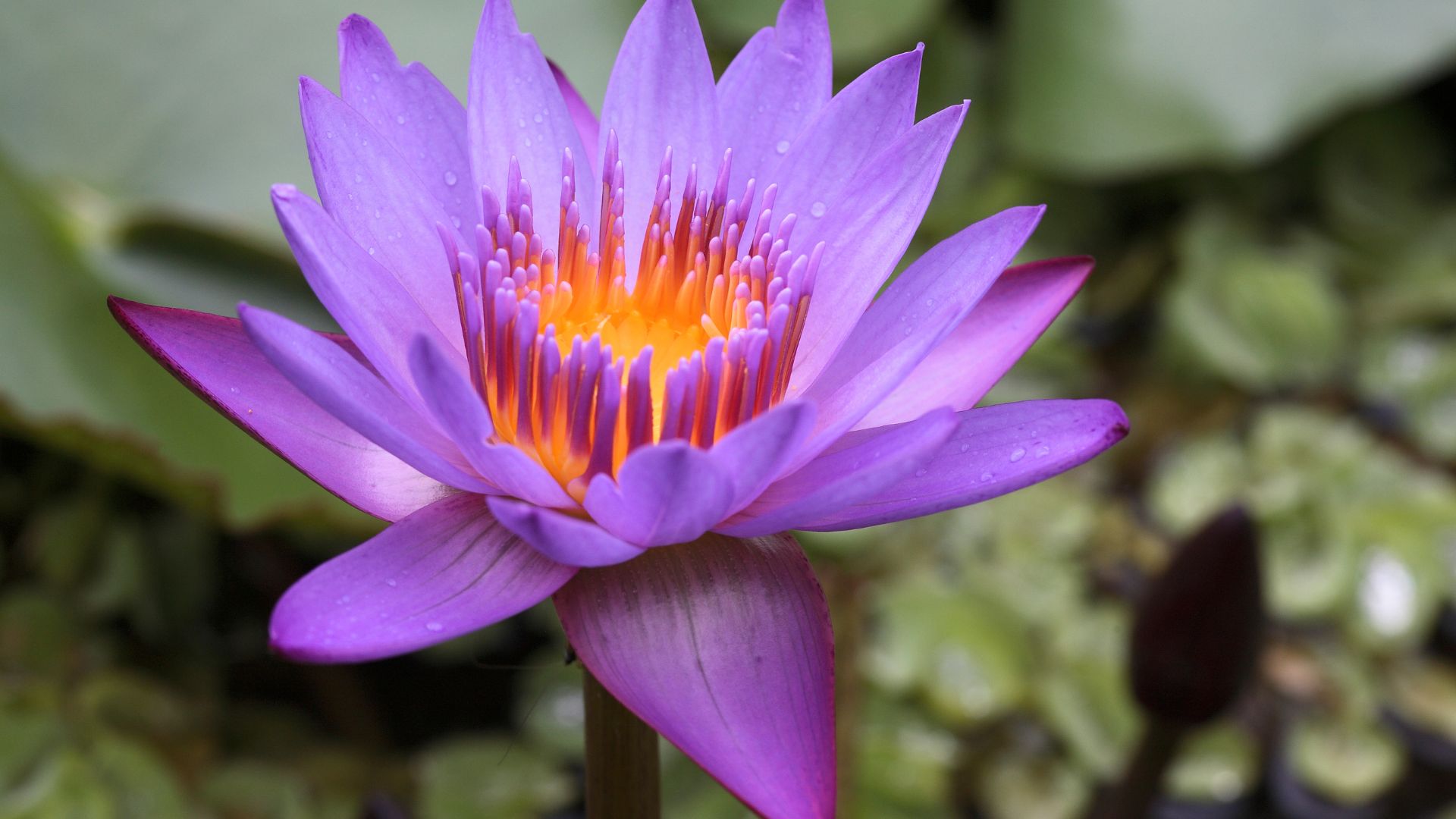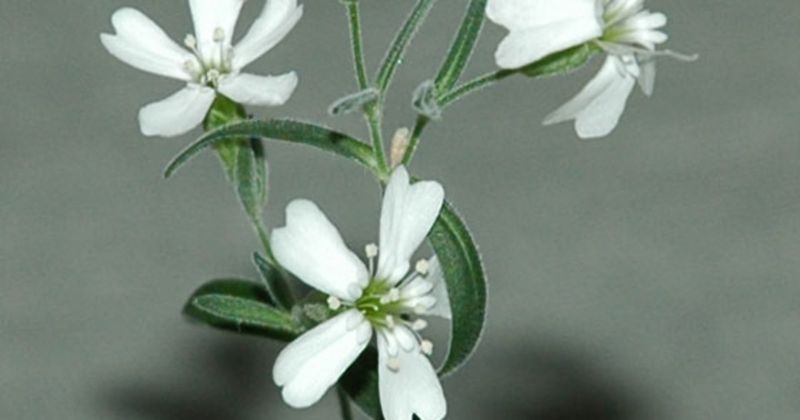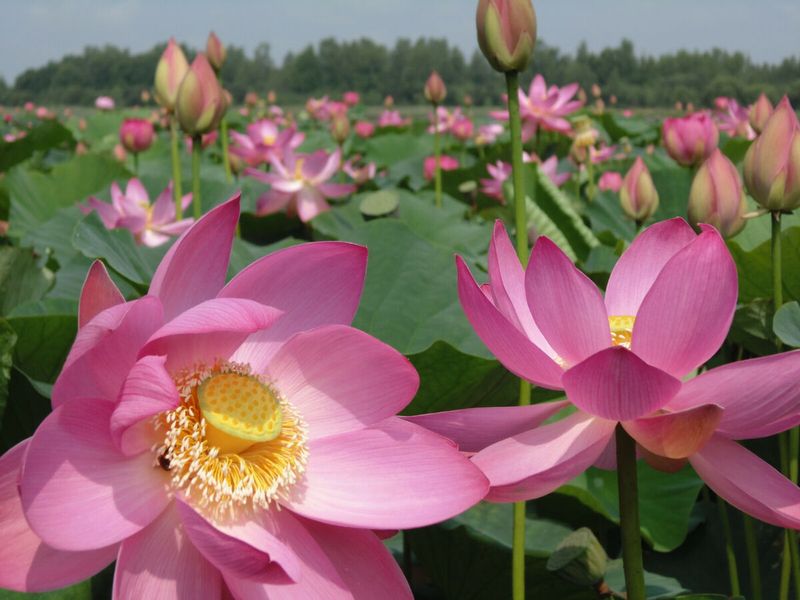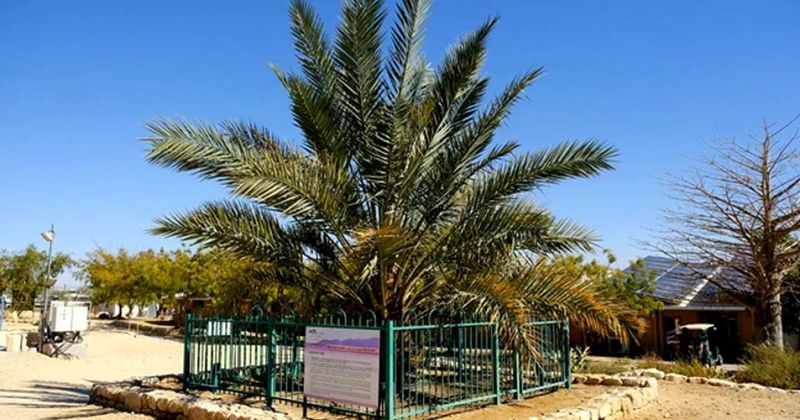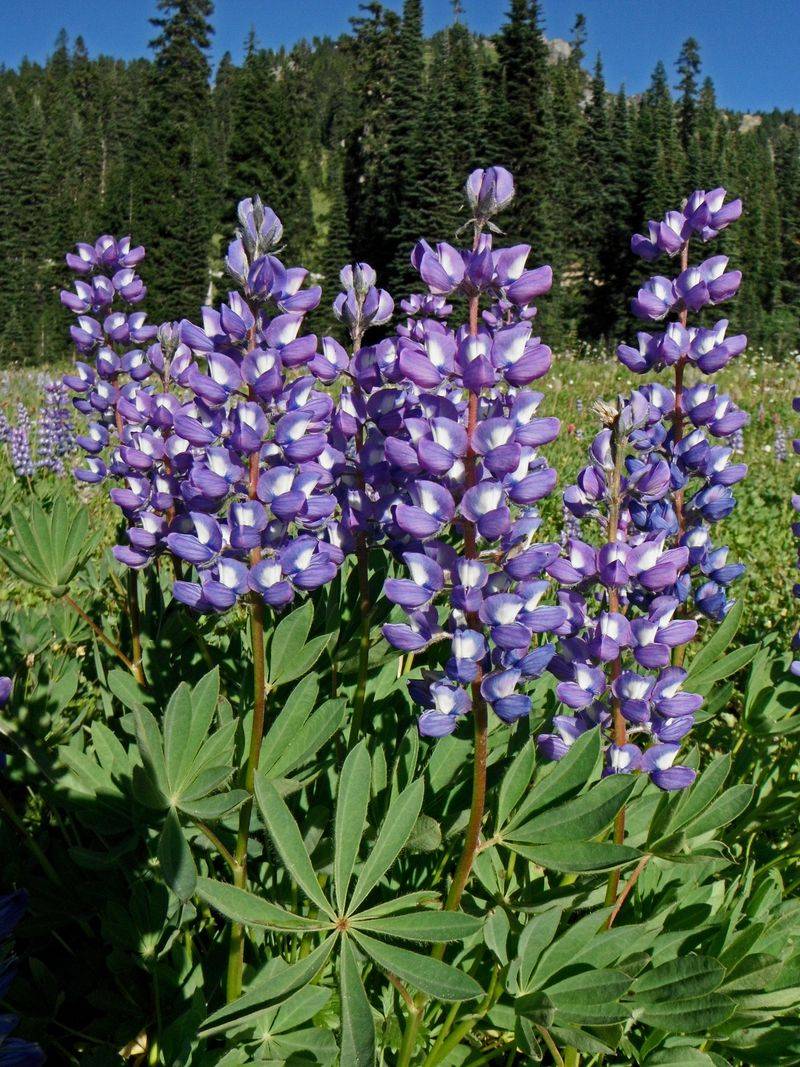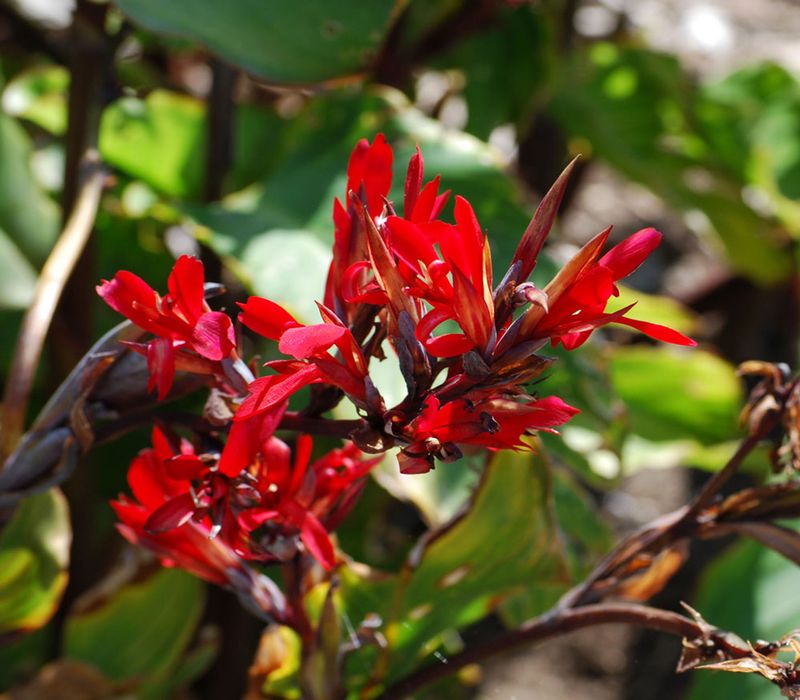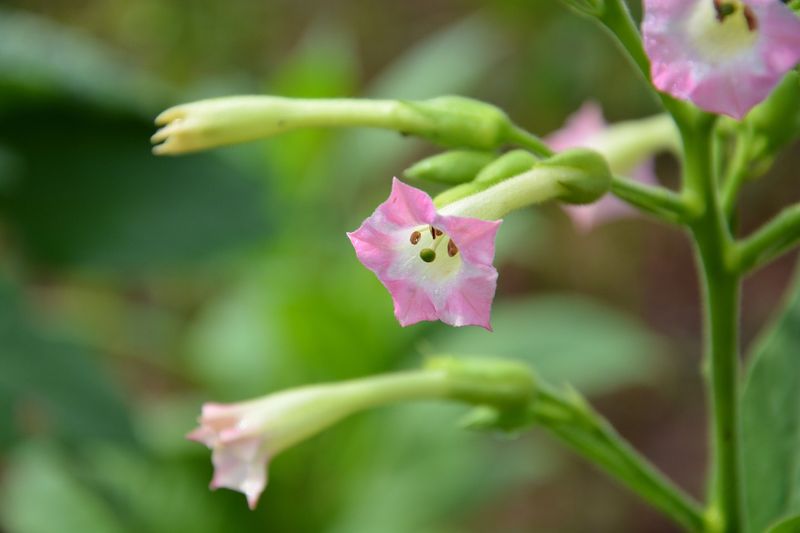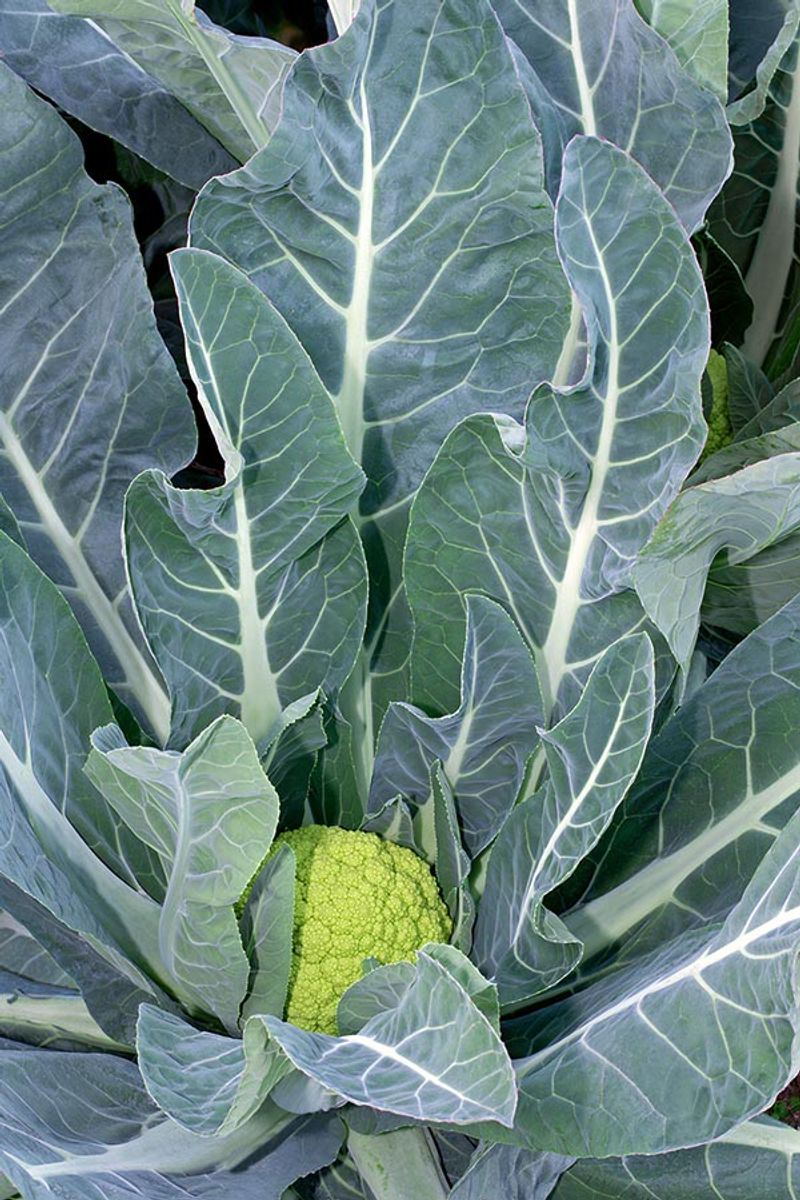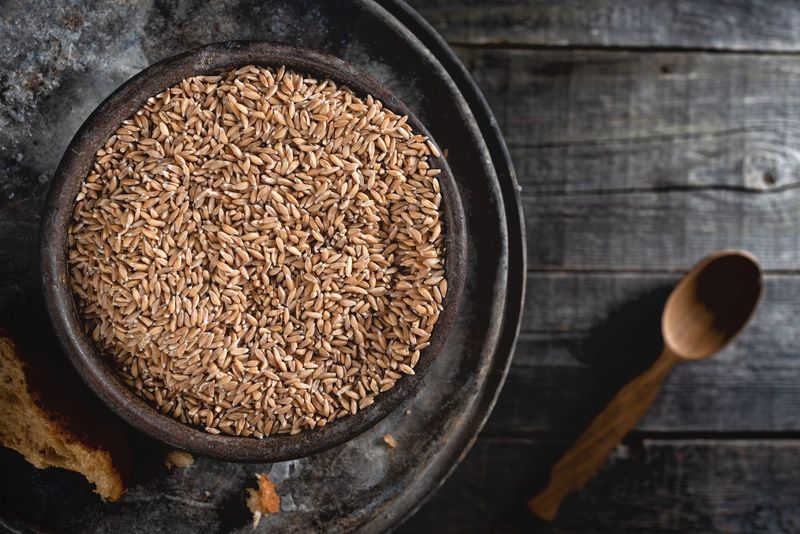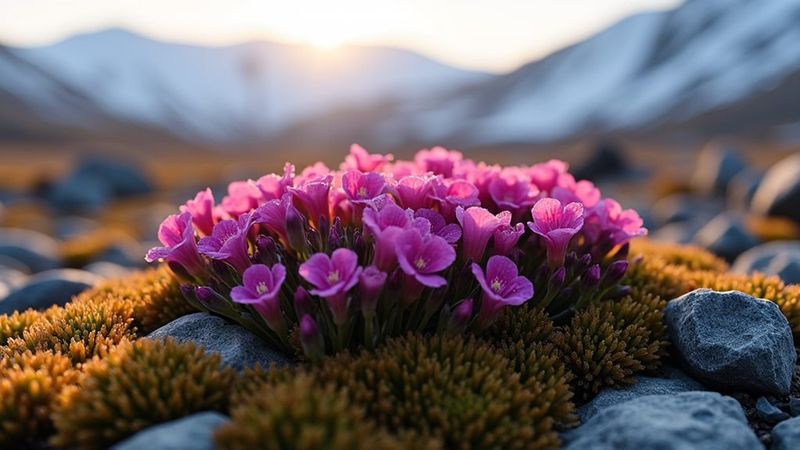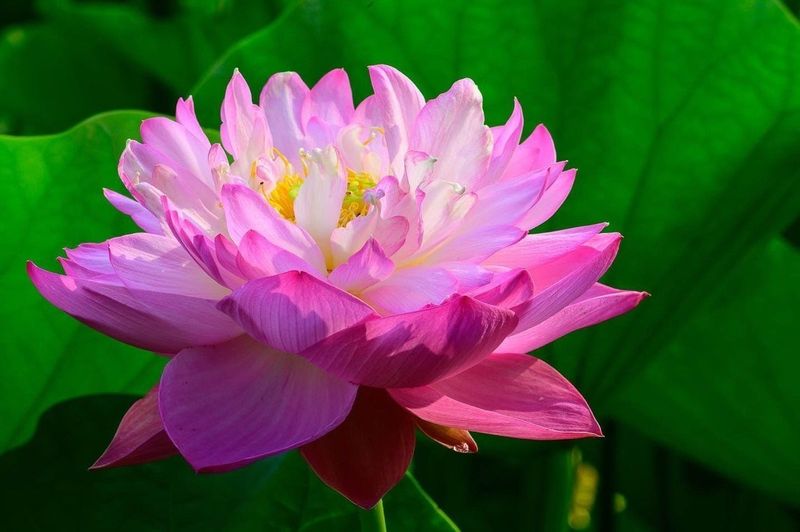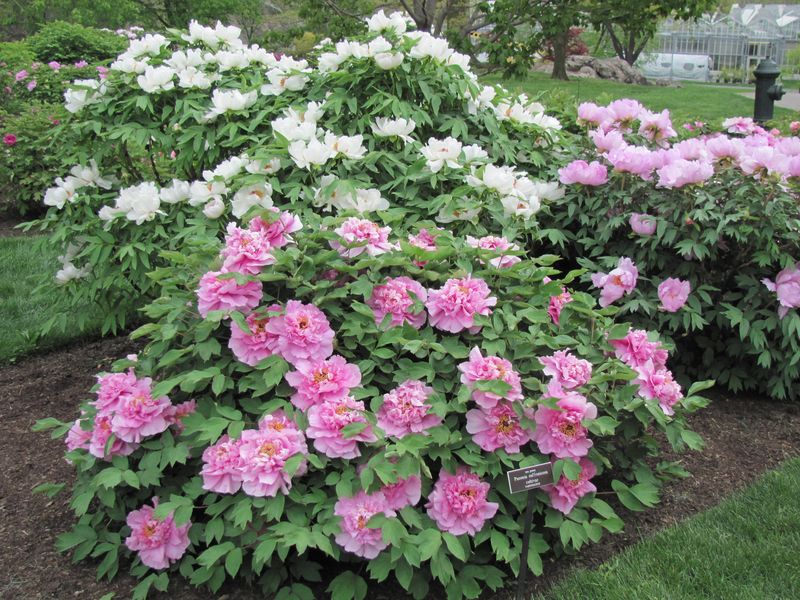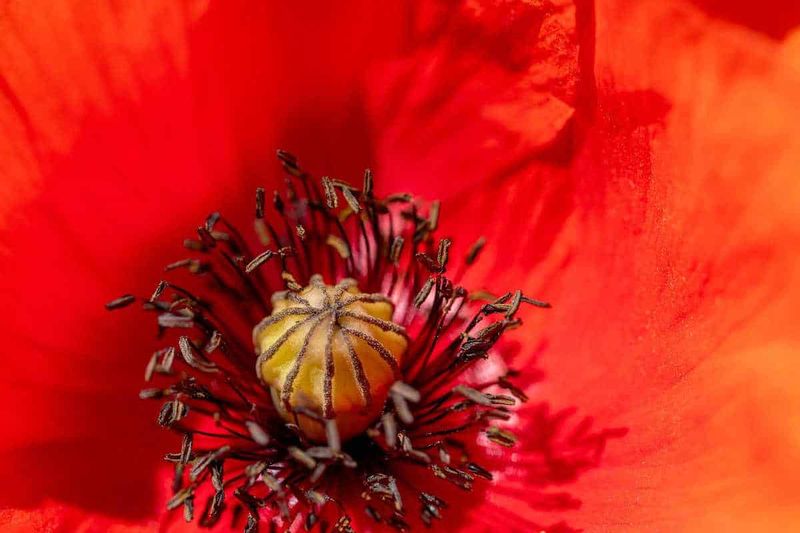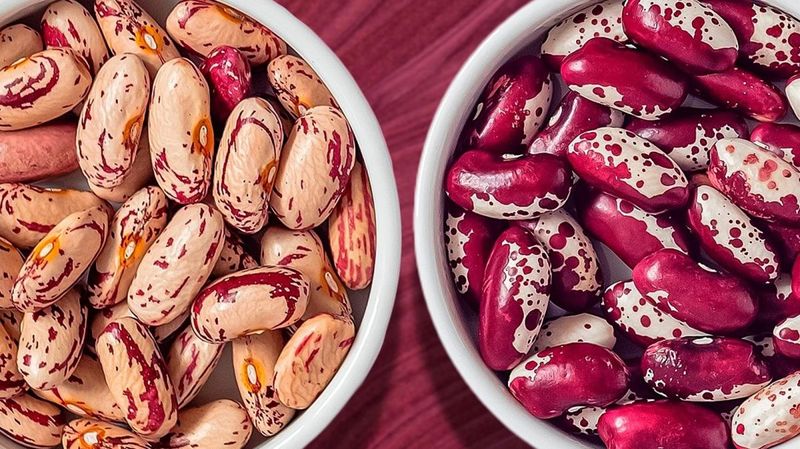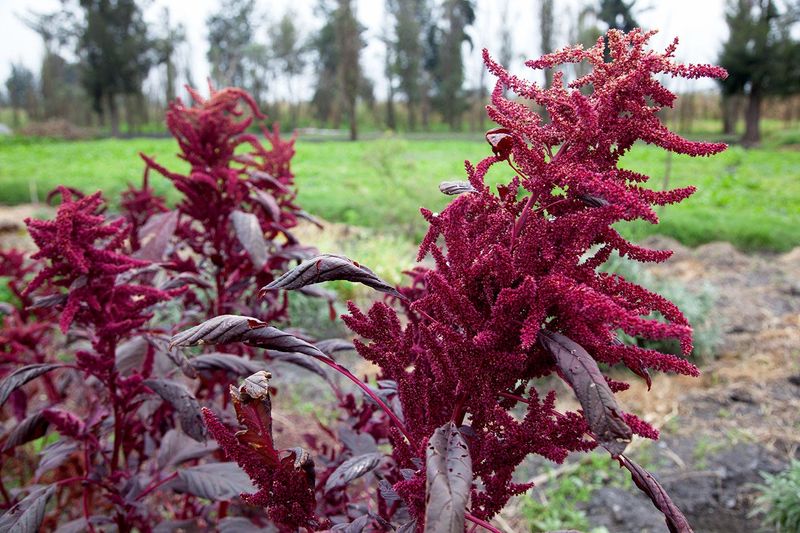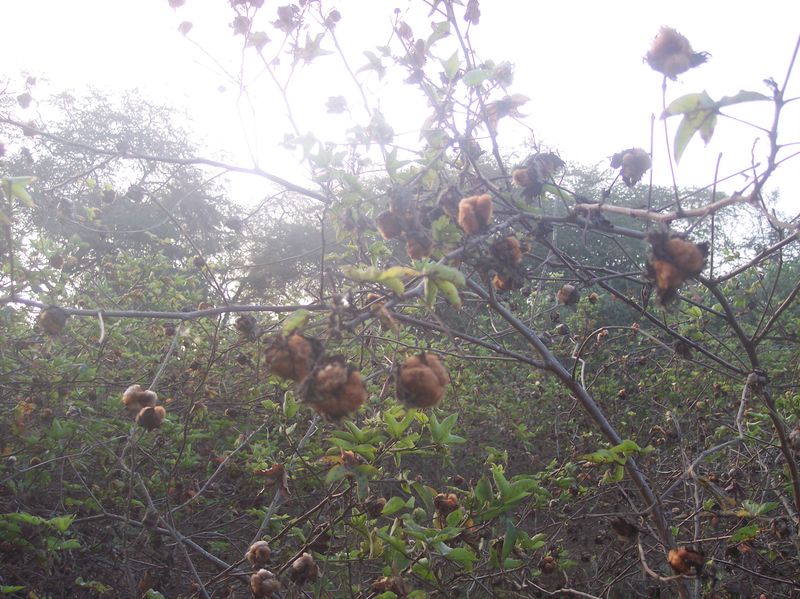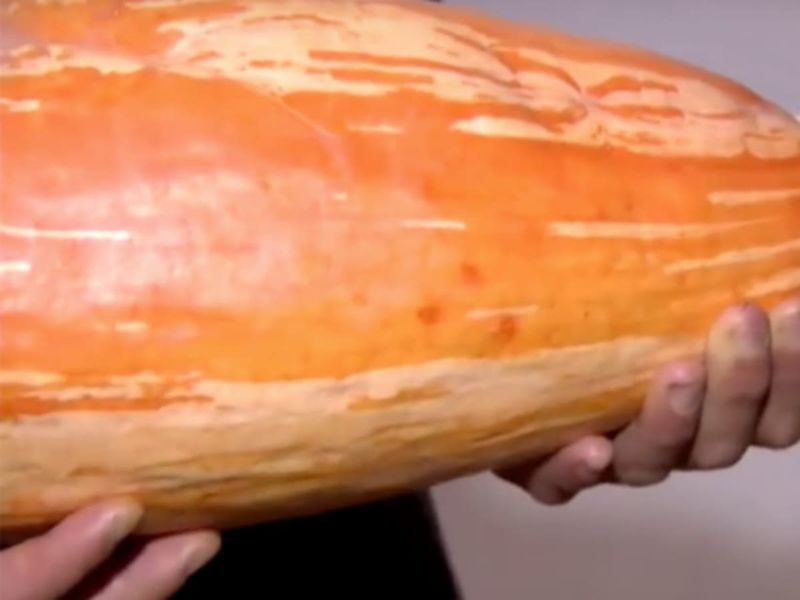Imagine this: you’re holding a tiny seed in your palm, and the last time it sprouted, woolly mammoths still walked the Earth. Sounds like something out of a sci-fi novel, right? But it’s real—scientists have managed to coax ancient seeds back to life, and some of them are flowering again after thousands of years.
These aren’t just cool science experiments—they’re living links to the past. Whether they were tucked away in Egyptian tombs or frozen deep in Siberian permafrost, these seeds carry stories from long-lost ecosystems. And somehow, against all odds, they’re still capable of growing, blooming, and reminding us how resilient nature truly is.
In this guide, we’ll take a closer look at some of these ancient flowers that have made an incredible comeback. If you’re a gardener with a love for history (or just a curiosity for nature’s surprises), this is a fascinating peek into the plants that time almost forgot.
1. Silene stenophylla – The 32,000-Year-Old Beauty
Russian scientists made headlines in 2012 when they revived this delicate white flower from fruit tissues preserved in Siberian permafrost for over 32,000 years. The Ice Age seeds were found in an ancient squirrel’s burrow, perfectly preserved in the frozen soil.
The modern specimens grow best in cool, well-drained soil with partial sunlight. They’re surprisingly adaptable to container gardening and rock gardens, requiring minimal care once established. Their shallow root systems need protection from extreme heat.
What makes this plant remarkable is its genetic difference from modern versions – the ancient variety produces larger flowers and more seeds. Growing this prehistoric plant connects gardeners directly to the Pleistocene era when woolly rhinos and mammoths still walked the Earth.
2. Sacred Lotus – The Aquatic Time Capsule
Archaeologists discovered viable lotus seeds in an ancient lakebed in China that had remained dormant for approximately 1,300 years. The remarkable germination success challenged previous understanding of seed longevity and earned these specimens the nickname ‘sacred lotus.’
Modern gardeners can grow these historic aquatic plants in large containers with at least 6 inches of heavy clay soil topped with water. They thrive in full sun exposure and warm temperatures between 75-85°F. The plants require nutrient-rich conditions to support their impressive growth.
Sacred lotus plants produce stunning pink-tinged flowers up to 8 inches across that rise majestically above the water. Their large, circular leaves repel water thanks to microscopic surface structures – a phenomenon that inspired self-cleaning technologies and water-repellent materials.
3. Judean Date Palm – From Biblical Times
In 2005, researchers successfully germinated a 2,000-year-old date palm seed recovered from excavations at Herod the Great’s palace on Masada, an ancient fortress near the Dead Sea. The seed survived millennia in the arid desert climate, preserving its viability despite its age.
The resulting male tree, nicknamed Methuselah, requires the hot, dry conditions of its native region. Modern growers need to recreate desert-like environments with sandy, well-draining soil and minimal watering. Protection from frost is essential as these palms cannot tolerate cold temperatures.
Scientists have since germinated additional ancient Judean date palm seeds, producing both male and female trees. In 2020, they successfully pollinated a female tree, producing dates that had not been tasted since biblical times.
4. Arctic Lupine – Frozen For 10,000 Years
Canadian researchers made a remarkable discovery in the 1960s when they successfully germinated Arctic lupine seeds recovered from lemming burrows in the Yukon permafrost. Carbon dating revealed these seeds had remained frozen for approximately 10,000 years, making them among the oldest plant material ever found.
Growing these resilient plants requires well-draining soil, cool temperatures, and plenty of sunlight. Their natural adaptation to harsh Arctic conditions makes them surprisingly drought-tolerant once established. Home gardeners appreciate their minimal maintenance requirements and cold hardiness.
The beautiful purple-blue spikes of the Arctic lupine add vertical interest to any garden while fixing nitrogen in the soil. Their ability to improve poor soil conditions makes them valuable pioneer plants for restoration projects, demonstrating how ancient plant genetics can help solve modern environmental challenges.
5. Canna Edulis – The Mummy Flower
Archaeologists discovered these remarkable seeds in a 600-year-old burial site in Argentina. The cannas were placed as funeral offerings, preserved in the dry microclimate of the tomb until their rediscovery in the early 2000s. Scientists successfully germinated them, bringing back plants unseen for centuries.
Modern gardeners can grow these historical plants in rich, moist soil with plenty of organic matter. They prefer warm conditions and consistent moisture during the growing season. The large, tropical-looking leaves and striking flowers thrive in full sun to partial shade, making them versatile garden additions.
Beyond their beautiful red-orange blooms, these ancient cannas produce edible rhizomes that were an important food source for indigenous South American cultures. The starchy roots can be prepared similarly to potatoes, offering gardeners both ornamental appeal and a connection to pre-Columbian agricultural practices.
6. Sacred Tobacco – From Ancient Shamans
Archaeologists working at a Native American ceremonial site in Utah uncovered 1,600-year-old tobacco seeds preserved in clay vessels. After careful germination attempts, scientists successfully revived this sacred plant variety used by ancient shamans for ceremonial purposes.
Growing this historical tobacco requires light, sandy soil with excellent drainage. The plants need full sun exposure and moderate watering, with care taken to avoid overwatering. They’re sensitive to frost and require a growing season of at least 120 days to reach maturity.
The revived plants produce distinctive star-shaped flowers that open at dusk, releasing a sweet fragrance to attract night-pollinating moths.
7. Brassica Oleracea – The Roman Cabbage
During excavations of a Roman settlement near Naples, archaeologists discovered carbonized seeds preserved by the eruption of Mount Vesuvius in 79 CE. Against all odds, botanists managed to revive several Brassica seeds, restoring a vegetable variety that Romans would have recognized.
This ancient cabbage relative grows best in cool weather with rich, well-draining soil. It requires consistent moisture and benefits from companion planting with aromatic herbs to deter pests. Modern gardeners appreciate its cold tolerance and ability to thrive in spring and fall gardens.
The revived Roman variety differs from modern cabbage in its looser leaf formation and stronger flavor profile. Historical texts suggest this specific variety was prized for medicinal applications, particularly for treating gout and digestive ailments.
8. Egyptian Wheat – Pharaoh’s Ancient Grain
Despite popular myths about wheat from Egyptian tombs, authentic ancient wheat seeds were discovered in a sealed storage chamber at a temple complex near Thebes. Dating back approximately 3,000 years, these seeds represent a variety cultivated during the New Kingdom period of ancient Egypt.
Growing this historical grain requires full sun exposure and moderately fertile soil with good drainage. The plants develop more extensive root systems than modern wheat varieties and demonstrate remarkable drought tolerance. They grow taller than contemporary wheat, reaching heights of nearly five feet.
The revived Egyptian wheat produces a distinctive grain with higher protein content but lower yield than modern varieties. The plant’s natural resistance to certain fungal diseases has attracted attention from agricultural researchers looking to enhance the resilience of modern wheat through crossbreeding.
9. Siberian Campion – Ice Age Survivor
Russian scientists made botanical history when they successfully germinated 32,000-year-old seeds of Silene stenophylla discovered in the Siberian tundra. The seeds had been buried by ancient squirrels in the permafrost, creating perfect preservation conditions throughout the millennia.
These Ice Age survivors grow best in rocky, well-drained soil with moderate water. They prefer cool temperatures and can handle partial shade, making them suitable for woodland garden edges. Their natural resilience makes them relatively low-maintenance once established in appropriate conditions.
The revived plants produce white, five-petaled flowers that differ subtly from their modern counterparts. Scientists noted they develop fruits faster and produce more seeds than contemporary relatives. This ancient flower offers gardeners a living connection to the Pleistocene era.
10. Ancient Chinese Lotus – The Manchurian Miracle
Researchers from the Beijing Institute of Botany successfully germinated lotus seeds discovered in an ancient lakebed in northeastern China’s Manchurian region. Carbon dating placed these seeds at approximately 1,300 years old, making them among the oldest directly documented germinated seeds.
Growing these historic aquatic plants requires large containers filled with heavy clay soil and topped with 6-8 inches of water. They need full sun exposure and water temperatures above 70°F to thrive. Winter protection is necessary in colder climates as the rhizomes cannot survive freezing.
The ancient lotus produces magnificent pink flowers up to 10 inches in diameter that open in the morning and close at dusk. Their seed pods develop into distinctive shower-head-like structures prized by flower arrangers. Traditional Chinese medicine values different parts of this plant for treating various ailments.
11. Japanese Woodland Peony – The Samurai Flower
Archaeologists excavating a samurai residence from the Kamakura period (1185-1333 CE) discovered a ceramic jar containing preserved peony seeds. After careful restoration work, botanists successfully germinated several seeds, bringing back a flower variety that hadn’t bloomed for over 800 years.
These historical peonies prefer dappled shade and rich, well-draining soil with consistent moisture. They’re more tolerant of woodland conditions than modern garden peonies, making them excellent choices for shaded gardens. Their deep root systems mean they should remain undisturbed once planted.
The revived samurai peonies produce distinctive nodding flowers in a soft pink shade with prominent yellow stamens. Historical records indicate these specific peonies were cultivated not just for ornamental purposes but also for medicinal use by samurai families.
12. Medieval Medicinal Poppy – The Monastery Flower
During renovation work at a 13th-century monastery in central France, workers discovered a sealed clay vessel containing various seeds. Among them were poppy seeds that historians believe were part of the monastery’s medicinal garden, preserved for approximately 800 years in the cool, dry environment.
Growing these historical poppies requires well-draining soil in full sun locations. They’re drought-tolerant once established and self-seed readily under favorable conditions. Spring planting works best in cooler climates, while fall planting is preferable in warmer regions where they can establish before summer heat.
The revived monastery poppies produce delicate, cup-shaped flowers in a distinctive shade of reddish-purple not commonly seen in modern varieties.
13. Anasazi Bean – The Ancient American Legume
Archaeologists exploring cliff dwellings in New Mexico discovered a sealed clay pot containing bean seeds preserved for approximately 1,500 years. The arid conditions and protection from the elements kept these seeds viable, allowing scientists to successfully revive this ancient food crop grown by the Ancestral Puebloan people.
These historical beans thrive in well-draining soil with moderate fertility. They’re remarkably drought-resistant, having been developed in the arid Southwest. Modern gardeners appreciate their bushing growth habit that eliminates the need for trellising and their natural resistance to common bean diseases.
The revived Anasazi beans produce beautiful purple and white speckled flowers followed by pods containing distinctively marked red and white beans. Beyond their ornamental value, these beans cook quickly without pre-soaking and develop a sweet, nutty flavor that modern chefs prize.
14. Amaranth – The Aztec Sacred Grain
In 1997, archaeologists working at an Aztec site near Mexico City discovered ceremonial vessels containing preserved amaranth seeds dating to approximately 500 years ago.
The revived Aztec amaranth grows best in full sun with moderate water and well-draining soil. It’s remarkably heat-tolerant and continues growing through summer when many other plants struggle. Modern gardeners appreciate its minimal pest problems and striking visual appeal in both ornamental and vegetable gardens.
Ancient amaranth produces dramatic plumes of deep burgundy or gold flowers followed by thousands of tiny, nutritious seeds. The Aztec varieties contain higher protein levels and specific amino acid profiles different from modern cultivars.
15. Prehistoric Cotton – The Peruvian Time Capsule
Archaeologists exploring a pre-Incan tomb complex near the Peruvian coast discovered cotton seeds preserved in sealed ceramic vessels dating back approximately 1,500 years. The extremely dry conditions of the region perfectly preserved these seeds until their discovery in the early 2000s.
Growing this ancient cotton requires a long, warm growing season with temperatures consistently above 60°F. The plants need full sun exposure and moderate watering with excellent drainage.
The revived Peruvian cotton produces distinctive brownish-pink fibers rather than the white we associate with modern cotton. Textile experts have determined these ancient varieties have naturally colored fibers that maintain their hue without dyeing.
16. Extinct Squash – The Return Of The Lost Gourd
A team of archaeologists excavating a Native American site in Wisconsin unearthed a small clay vessel containing preserved seeds dating back approximately 800 years. After careful analysis, botanists identified them as an extinct squash variety with no known modern descendants.
The revived squash grows vigorously in rich, well-draining soil with full sun exposure. It requires regular watering during fruit development but shows surprising disease resistance compared to modern squash varieties.
This ancient squash produces distinctive oblong fruits with vibrant orange flesh and a sweet, nutty flavor unlike any contemporary variety. Culinary testing revealed higher beta-carotene content and lower water content than modern squash, making it excellent for roasting and baking.

